Click Here to see the Master Facilities Plan
Executive Summary (click here)
Thursday, Aug. 18 Public Hearing Information
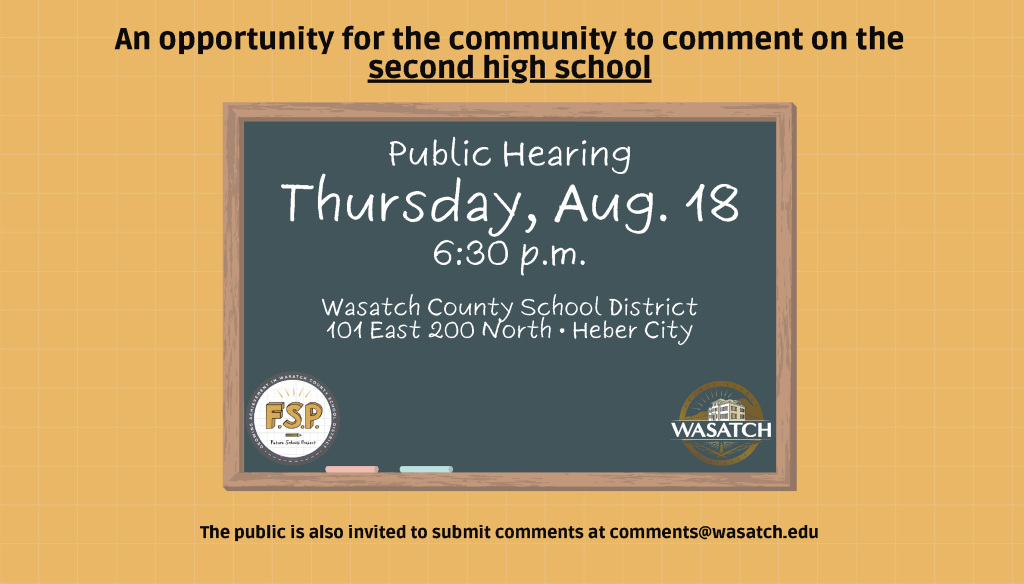
- During the past year, the Future Schools Project (FSP) committee was facilitated by a third party to help create a facilities master plan for Wasatch County School District (WCSD)
- The number one recommendation from the FSP committee was to build a second high school in a fiscally-responsible manner as soon as possible
- The WCSD Board of Education will be paying off the current Wasatch High School in 2024
- The Board of Education will fund most of the high school with lease revenue bonds, which can be issued immediately instead of waiting until February 2023 following a general obligation bond election
- Lease revenue bonds will provide a savings over general obligation bonds of – conservatively – half an interest point, or $11.4M on $150M, based on escalating interest rates
- Lease revenue bond payments will begin in 2025 and will be similar to the current payment on the existing high school
- A June 2022 survey of Wasatch residents identified lease revenue bonds as the preferred method for funding new construction
- The Board of Education will convene a Building Committee of local residents to help with the design of the future high school
We’re planning for the future of Wasatch County Schools. Together!
Wasatch County is one of the fastest growing counties in the country – with no end in sight. While the school district cannot control growth, we can plan for a growing student population to continue producing the best educational outcomes possible. A Facilities Master Plan will assess the condition and suitability of our current buildings; identify the public’s vision for how buildings can support our education goals; and provide options for addressing growth.
Materials and Feedback from April 7 Open House
Previous
Next
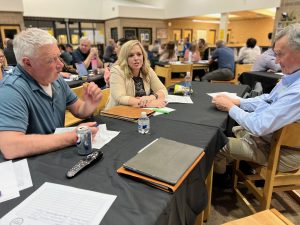

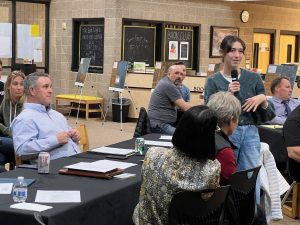
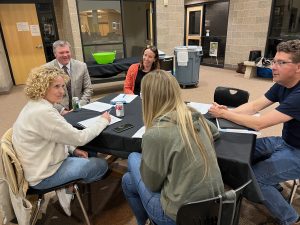
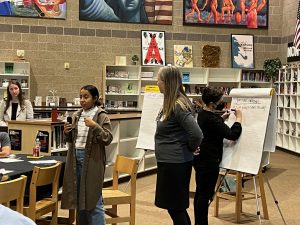

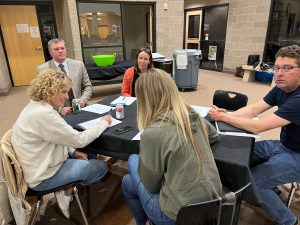
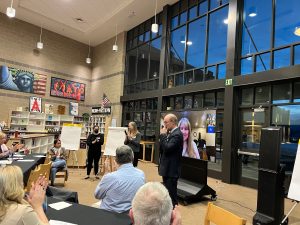
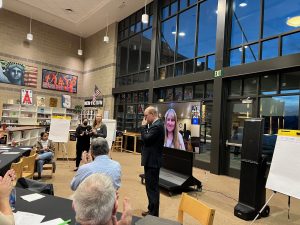
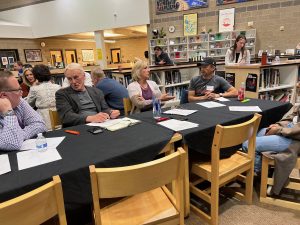
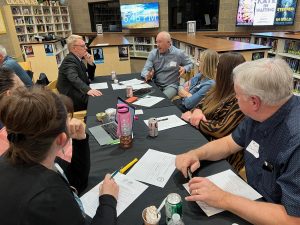
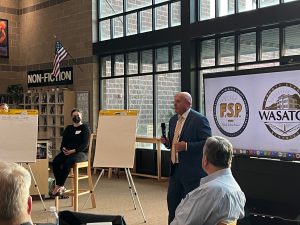
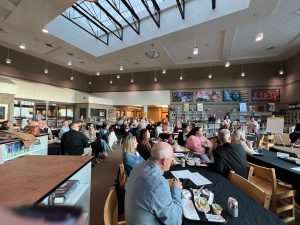
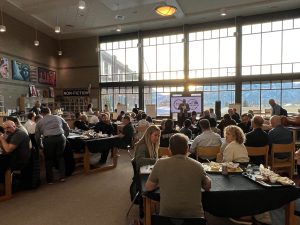
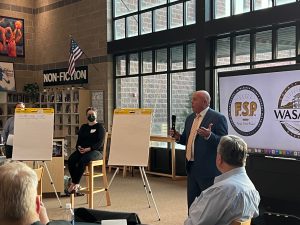
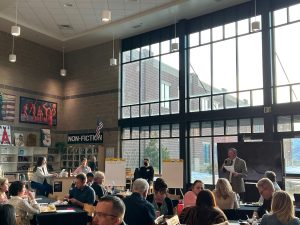
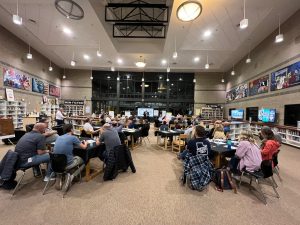
Previous
Next
March 3, 2022 Steering & Advisory Committee Meeting Recap
As Wasatch County School District (WCSD) enters the final phase of its long-term master planning process – called the Future Schools Project – more than 50 Community Advisory and Steering Committee members met on March 3, 2022, in the Wasatch High School library to review various options for addressing District growth. Those options include: Grade Reconfiguration, Extended Day/Double Sessions, Year-Round Enrollment, Online Coursework, School Boundary Adjustments and Additions/New Schools.
The meeting included presentations from experts who have experience in managing the overcrowding options, with committee members engaging in small group discussions after each presentation. The groups then weighed in on their position on each option presented.
Utah State School Board Chair, Mark Huntsman, joined the meeting as a special guest, thanking the committee for helping to address the issues schools face when considering measures to handle the type of explosive growth Wasatch County is experiencing, with voter-issued general obligation bonds being the primary funding mechanism for schools to use.
“I applaud WCSD for undergoing the Master Facilities Plan process as the way to look out for the best interests of students,” Mr. Huntsman noted, adding, “If you fail to put a plan together, especially a master plan, most likely you’re going to create victims, and those victims, first, are students. And then those students become adults, and then become citizens, so it’s really important that they have this fantastic opportunity for a great education.”
Regarding growth, WCSD Student Services & CTE Director, Dr. Jason Watt, presented the most recent data from the District’s demographers at Davis Demographics, which projects school enrollment over a five to ten-year period. Davis Demographics projects the District’s total number of K-12 students increasing from 8,734 to 11,000 in 2031 – a 26% increase.
The Consultant Team and Community Committees also have new long-term growth figures to consider, as the Kem C. Gardner Policy Institute at the University of Utah has released the Utah Long-Term Planning Projections: A Baseline Scenario of Population and Employment Change in Utah and its Counties.
The report projects a 131% population increase from the Wasatch County 2020 census numbers of 34,933 to 81,022 in 2060 – more than doubling the population. That puts Wasatch County as the second-fastest growing county behind Washington County.
On the possible option of Grade Reconfiguration, Alpine School District Superintendent, Dr. Shane Farnsworth, who spoke to the fact that, while many high schools in his district are a 10-12th grade configuration due to growth in Utah County, it isn’t a preferred model to achieve the bast educational outcomes and access to extracurriculars.
“I would say our general feeling as a district, if we had the space, we would have 9-12 (grade) high schools, and (grades) seven/eight or six, seven, eight middle schools just because of the opportunities it provides our students,” Dr. Farnsworth explained.
To address the option of Extended Day/Double Sessions, Alpine School District administrator, Rochelle Spencer explained how splitting the students into an early and a later track can accommodate a larger student population, and, while the varied start and end times helped some parents with their work schedules, it also meant larger class sizes and a cost to the District of an additional 15% in teacher salaries to reflect the longer day.
Ms. Spencer noted that this solution can create uneven class sizes, stating, “We have had cases where you’ve been very lopsided, so (in) one track, you’ve got three-fourths or two-thirds of your class, and the other track is just one-third. So for a teacher, that’s hard. And then having the middle of the day be the biggest part of your class because it is a much larger class on (the Double Session) model, so we’ve actually moved back to the traditional model this year.”
Detailing her experience as the principal of the last school in Utah with a year-round schedule, Ms. Becky Gerber of Jordan School District explained the benefits and challenges of running four separate tracks for students throughout the calendar year.
“The largest benefit is the ability to significantly increase the capacity of a school,” Ms. Gerber explained. You’ve got kids on four tracks – you will have three tracks in the building at all times, with one track off, and that rotates. Students are on a nine week (track) in-class, and then they have a three week break, and – depending on the calendar – sometimes that stretches into a four-week break. We had several teachers that enjoy that rotation of nine weeks, on three weeks off, and even some of our families, but I would say probably not the vast majority. Several challenges that we encounter with this model that really steered us to move away from the model are the limited calendar options in order to get the required number of days and hours into a school year. You have to have a longer school day, the day is extended by anywhere from 15 to 20 minutes in order to be able to get all that time in, and then you actually have fewer school days by the time kids have rotated on and off.”
Mr. Tod Johnson, WCSD Director of Curriculum, explained how Online Coursework could affect the number of students in the high school, demonstrating that – while 507 Wasatch High School students took an online course during this past quarter, only 15 students are online fully, which represents .6% of the total student body. Superintendent Sweat noted that, because it is the position of the District to never force students to learn online, the possible solution of Online Coursework to alleviate overcrowding wouldn’t net enough students moving to an online schedule to make a difference.
Addressing School Boundary Adjustments, Dr. Eric Campbell, WCSD Director of Elementary Education, noted that three of the District’s five elementary schools are nearing or beyond capacity, so adjustments to boundaries is likely to occur.
The District’s Director of HR & Operations, Shawn Kelly, presented on Additions/New Schools, with an estimate for the cost of adding additional classrooms to Wasatch High School, along with the cost of a new high school. Additions to the high school, which would net 14 classrooms, would cost between $10.5-million and $12.1-million, depending on how soon construction begins, and a yearly increase in construction costs, while a new high school is estimated to cost between $120-million and $151-million.
Mr. Kelly introduced Todd Barney of Bud Mahas Construction, who explained that Wasatch High School was built efficiently without any “fluff,” based on the quality of construction materials and finishes. Mr. Barney also noted that, with the failure of the 2019 bond, which would have built a second high school in the Valley for $100-million, depending when WCSD goes to bond, a new high school will now cost taxpayers an additional $40-million to build, due to rising construction costs.
For each option presented, nearly all committee members agreed that, to address overcrowding, building a second high school is the best way to address student growth in WCSD.
The District’s consultant team, GSBS Architects, will use input from the committee members during the March 3 meeting when crafting its draft 10-to-20-year Master Facilities Plan. The draft Master Plan will be presented to the public during an open house on April 7 for comment before the WCSD Board of Education at their meeting on April 21. If the Board approves the plan, it will become a roadmap for the District to follow in the future when considering growth in regard to plans for current and future schools.
# # #
March 3, 2022 Advisory and Steering Committee Meeting Video

















Your vision for education
The Community Steering and Advisory Committees have developed five guiding principles to drive the master planning process. These articulate the community’s vision for how education facilities support quality education in Wasatch County.
Learn More
In September 2021, Wasatch County School District launched a year-long effort to develop a plan to direct growth over the next 20 years. This process will evaluate existing conditions within the district, identify the district’s immediate educational needs, and engage the public in a conversation about the community’s long-term education goals.
Top 10 Achievements
Wasatch School District’s mission is to ensure that all students obtain the knowledge, skills and dispositions that enable them to reach their personal goals and be productive, contributing members of society.
Take a look at 10 great examples of how we’re achieving that mission:
- ACT Test scores are at a 5-year high and 1.2 points higher than state average.
- WCSD ranks 3rd statewide for science testing, 10th statewide for math testing, and 12th in the state for ELA testing (among the 41 Utah school districts).
- Wasatch School District is committed to connecting every student through participation in an elective or extracurricular activity that they love to do and feel successful doing.
- Every School in Wasatch County School District offers Spanish dual language immersion, supporting native and non-native Spanish speakers. 59 students were awarded the Seal of Biliteracy in the graduating class of 2021.
- Wasatch High School offers more than 40 concurrent enrollment college credit courses, with 4,718 concurrent credits earned last year, and state certification in EMT, electrical apprenticeship Certified Nursing Assistant, medical and dental assisting, and pharmacy technician.
- The District recognizes two model Professional Learning Community (PLC) Schools, acknowledged nationally as some of the highest-performing PLC schools in the nation.
- Class of 2021 students were offered $8,543,500 in scholarships, with Wasatch Education Foundation awarding nearly $300,000 in scholarships funded by local donors.
- The District offers real-world professional experiences through the Wasatch Center for Professional Studies, a state-of-the-art CAPS facility at the Utah Valley University Wasatch Campus.
- Wasatch continues its strong history of academic and athletic champions with three Sterling Scholar winners in 2021, and multiple student-athletes earning the Utah High School Activities Association (UHSAA) Academic All-State distinction across many Wasatch teams annually.
- Wasatch School District ranks 4th in the state in comparison of teacher salaries and benefits.

